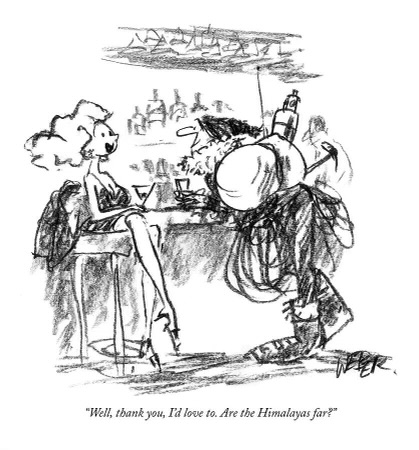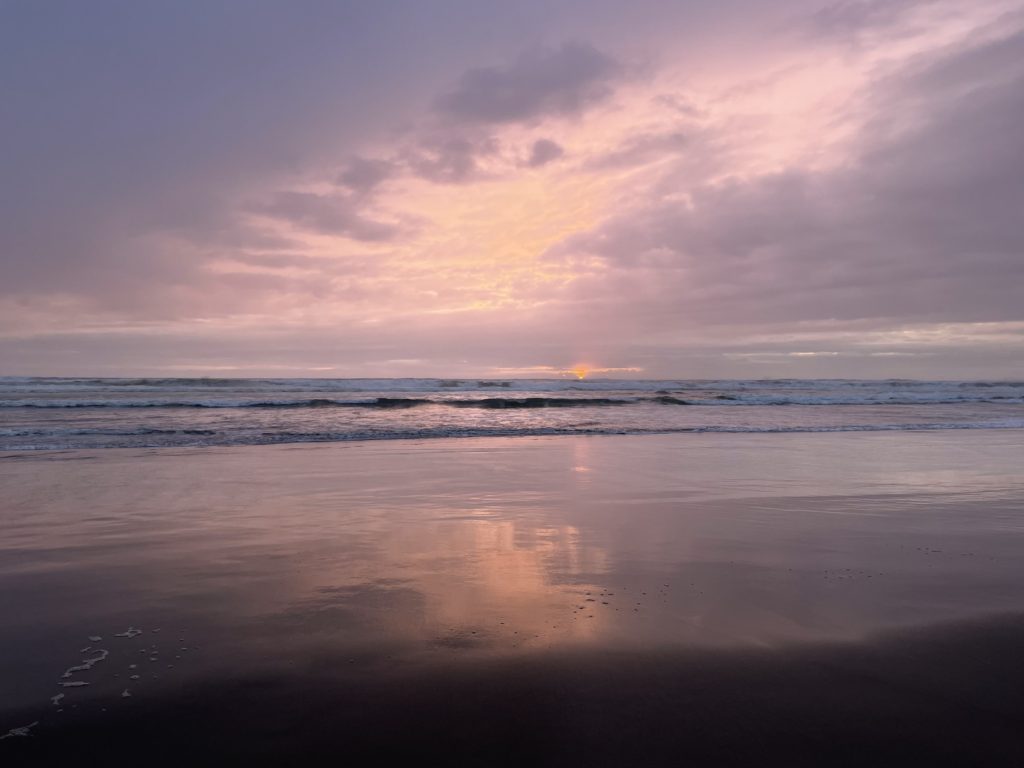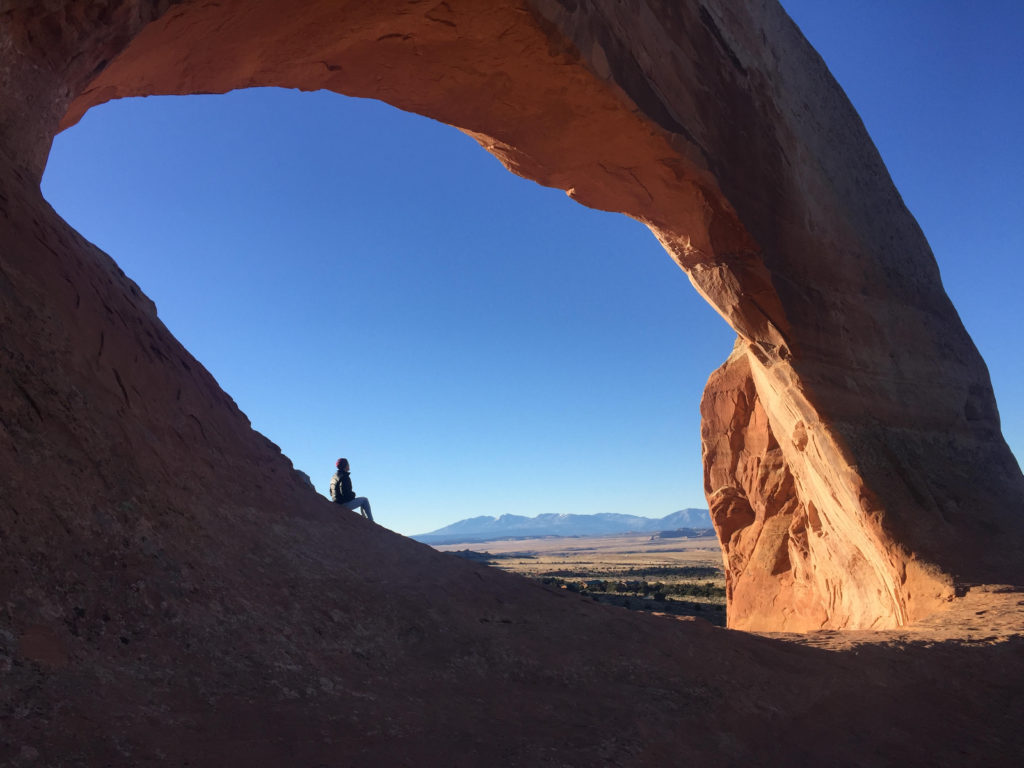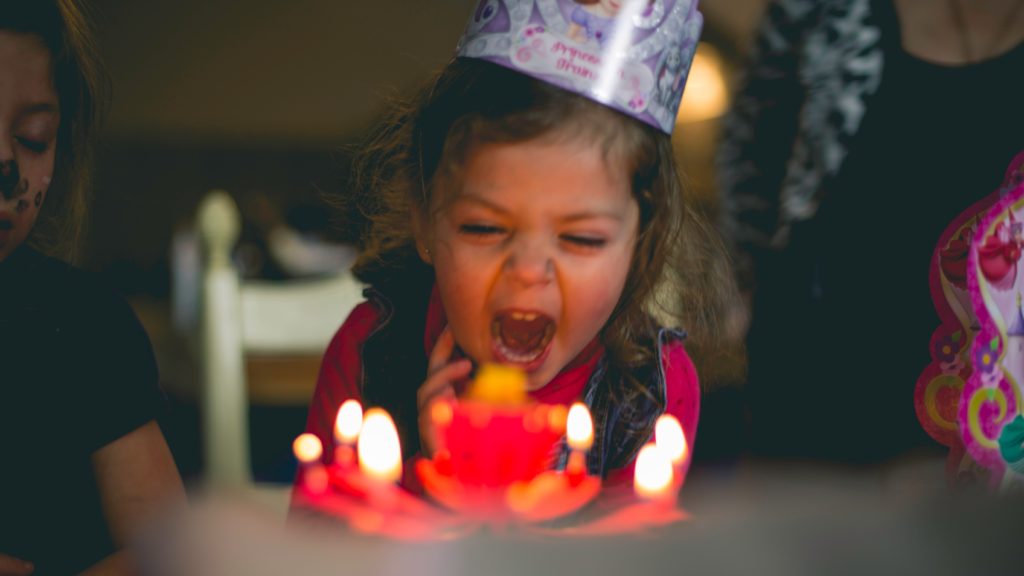Being alive blows me away. Every so often I’m gobsmacked anew by the miracle I am, and that you are. Animate, conscious meat sacks—bundles of aggregated Earth elements, able to sing and dance and tell stories. Able to learn. To remember.
Able to love. And to hate.
How crazy is this?!
This being alive thing is astounding! Awesome! Amazing! Wild!
I’m also able to know one day I’ll end. This self-aware, cohered dust that is me will return to the Earth from which I sprang. The miracle that is me will cease to exist in this form. This is, of course, true for every Earthling entity. I’m not special.
My friends in their 80s laugh at me—but I do fear aging and death. The other side of this amazing being alive thing is this amazing dying thing. I’ve already outlived both parents. I’ll be 80 myself in fifteen years.
I know how fast fifteen years goes. It’s not long.
Jed’s impending retirement has made this life of mine feel all the more urgent. For 50 years, I’ve been thinking someday I’ll get around to that. And next time I’ll do it different. Better. Somedays and next times are dwindling fast. I don’t have many do-overs left.
I want to live MY life, the life I’m meant to live. The life I choose for myself, not the one I’ve been trained to live. The life where I follow others’ rules and measure myself by others’ standards is a safe life. Safe, easy, and painful.
Now I see. This is what Lent is for: to examine my choices and conform them more fully to my values. So I won’t have regrets on my death bed. I want the Earthlings I love to know without an iota of doubt that I love them, through and through.
This revelation is nothing new, it turns out. Tradition and Mary Oliver have gotten here first.
Of course Lent is about mortality, says my husband when I share my revelation. He tells me Frederick Buechner said that Lent is for the big questions. Seven weeks to take meaning and mortality seriously.
And, of course also Mary Oliver, who asked What does it mean that Earth is so beautiful? And what shall I do about it? What is the gift that I should bring to the world? What is the life that I should live?
Living my life my way requires both going rogue and returning home. Following the direction of my heart will create more external conflict, as I bump up against established patterns and others’ preferences and expectations. Following my heart’s direction also means more internal peace, as the gap between my values and my choices narrows.
That gap hurts. That gap sucks energy. That gap is where I lose myself.
I want to close that gap. I want to recommit to myself and my priorities. Living in integrity with myself is self-ish. It’s also necessary, despite all the training to the contrary.
My integrity is my birthright.
Your integrity is your birthright.
Our integrity is our home.
PS. My newsletter is where I share my latest writing, news, and offerings. If you want to subscribe, you can do that here, and thank you!
[Photo: Natalie Rhea Rigg on Unsplash]
Category Archives: Aging
Are the Himalayas Far?

It’s 1983. I’m sitting behind our apartment in Tucson, the desert sunlight dappling down through pomegranates, creosote, and a grapefruit tree, doing homework from my University of Arizona post-bachelor’s teacher prep program. I’m 25 years old.
My husband joins me and says, “I’m thinking about starting the ordination process.”
“Oh. Okay,” I say. I remember feeling excited about a new adventure, and happy to go along for the ride.
“Well, thank you, I’d love to. Are the Himalayas far?”
Jed’s vocation has taken me places I never would have landed otherwise. Four years of seminary. Two babies. Six cities and five states—Massachusetts, New Mexico, Missouri, Illinois, and Oregon. Twelve houses. Nine jobs (for me).
I have friends all over the US, and a few in Europe. I’ve had a unique perspective on Church in action, both good and bad. I’ve enjoyed the benefits of Jed’s sabbaticals: England and Ireland, Iona, the Camino de Santiago.
This life has also been costly. 25-year-old Barb had no idea what she was saying yes to.
I’ve been doing this clergy spouse thing in one form or another for forty years, since the day Jed told me he wanted to pursue ordination as an Episcopal priest.
“Well, thank you, I’d love to. Are the Himalayas far?”
Jed recently announced that he’s retiring this summer. (Trinity, Bend readers: You’re awesome! I love you so much.)
We’ve been anticipating his retirement for years, imagining what it might be like and what we might do.
But now that it’s here, I’m noticing a part of me hanging on for dear life, resisting the upcoming seismic shift. As costly, painful, crazy-making, and occasionally lonely as these decades have been, this is the life and the marriage I know. This is the life I’ve conformed myself around. This is the life I’ve cut off pieces of myself to fit into.
Two primary threads weave this web of resistance, I think: my relationship to change, and the difference between soul and façade.
First, change.
We’ve all been doing this change thing since puberty, really. Followed by leaving home for the first time. Graduating from college. Committing to a life partner, and maybe deciding to become parents. These celebratory changes in the first half of life are then followed by a smorgasbord of the more complicated changes: Divorces. Serious Illness. Retirements. Big moves. Deaths.
Just because we’ve been doing the “Change Cha-Cha” for our entire lives doesn’t mean we know how to do it well.
Marriages, births, divorces, deaths, retirements, serious illnesses, big moves—they’re all Square One dissolution events.
Wayfinder Life Coaches learn this mantra for Square One: “I don’t know what the hell is going to happen … and that’s okay.” I’m changing this to: “I don’t know what the hell is going to happen … and I’m okay.”
To complicate matters, Jed and I have also got our feet in Square Two, as we begin to imagine concretely what these actual bodies of ours will do beginning in August. The Square Two mantra? “There are no rules … and that’s okay.” Modifying again: “There are no rules … and I’m okay.”
I’m also grappling with the loss that accompanies change. We’ll be leaving a community that is dear to us. Places that are dear to us. And people that are dear to us.
Underneath those obvious losses is a more subtle, sneaky thing poking my heart. I can’t tend to this sneaky thing until I see it. And to see it, I’ve had to sit still for a long time, look within, and listen to myself.
Which brings me to Soul and Façade:
That part of me that’s hanging on, asking for attention and poking me until I listen? It’s that social self I’ve constructed over more than six decades, buttressed by being “the rector’s wife” for so many years. It’s my façade, feeling itself in danger, clinging desperately for survival.
Social Self, False Self, Ego, Façade, Cultural Self—all are labels for the same necessary part of ourselves: the part we show to the world in order to get through our days. This façade, first formed in infancy and childhood, is continually refined throughout our first four or five decades. Finally, hopefully, we begin to let go of that false front in midlife, when it gets too damn heavy to carry around. If we do the work.
For so many years, it was just easier to be who I was expected to be than to seek for the pure strength of my Soul within me. And, of course, as kids we don’t have the option to say, “Screw you and your bullshit cultural rules. I’m gonna be ME!” We must figure out what behaviors will keep us alive, and those behaviors get wired in.
For the first time in our adult lives, Jed and I can let those roles drop away. We can be whoever we want to be, individually and together. Oh, the freedom of that! And the anxiety. We’re a little “deer in the headlights” right now. When those roles drop away, we’ll be vulnerable and naked. And new.
Who will I be?
Who will he be?
Who will we be?
“Well, thank you, I’d love to. Are the Himalayas far?”
Here’s what’s helping me to stay over my feet right now, this minute:
1. I’m remembering that the Change Cycle is baked into our Earthling DNA. Death and rebirth, over and over and over, is what life on Earth is all about. Even rocks get into it. Resistance is futile. I have the tools to ride this wheel. I have understanding. I have my mantras. I’m okay.
2. I’m intentionally discerning who’s speaking, who’s running the show. Is it my Social Self/False Self/Façade? Or is it my Soul? The façade part of me is scared shitless, really worried about doing this right, and bracing herself against all the impending loss. My Soul, however, when I get down to her, is peaceful, connected, and not the least bit worried. So I’m spending a lot of time being quiet and listening.
3. I’m paying attention to what feels good in my body. My body came into this world knowing what’s true for me. She still does. I simply need to use my skills, pay attention, and trust her guidance. Staying present and connected feels good. Worrying does not.
(These skills—Embodiment, Soul-based Living, and Skillful Change—are components of my Coaching Intensive program.)
What does this mean for my coaching practice? I feel comfortable committing to this work through June. After that, who knows? Not me. So if you’re feeling the nudge for private coaching, now is the time to connect for a Clarity Call.
I’m also creating a three-month Group Coaching Intensive to begin in March. Details to come! If you’d like more information about that, let me know.
Ooof! This is a long one. Thank you for hanging in with me!
Gratefully yours,
Barb
P.S. This is the blog version of my weekly-ish newsletter. That’s where I share my latest writing, news, and coaching offerings. You can subscribe here, and thank you!
Image: New Yorker cartoon, by Robert Weber
The quality of your peaceful presence matters.

Dear friends,
I turned 64 a couple of weeks ago. Growing old has been on my mind a lot lately. It’s been damn stressful up in my brain. Here’s what’s helping me, offered to those of you who are also thinking about growing old and feeling stressed about it.
We were at the coast last week for our annual post-Easter rest. (My Episcopal priest husband naps. I walk.) As is often true of the Oregon coast in April, the weather was wet and windy. But every evening for a couple of hours, the rain would taper off and I’d drag Jed down to the beach to watch the sunset. On this particular evening, the sunset was subtle. A solid bank of clouds out over the ocean seemed set to block the sun’s rays as it sank into the sea. The cloudy sky turned a beautiful mauve and pink, mist gathered at the base of Mount Neahkahnie, and waves reflected the sky back to itself.
We passed a photographer with his tripod at the waves’ edge, long lens pointed to where the invisible sun might be. A family of five, their big black poodle bounding in the surf, walked up the beach toward Manzanita, occasionally glancing toward the western horizon. Jed and I were ready to go inside out of the wind ourselves, believing we’d seen all the show there was to see.
We were wrong. Suddenly the sun peeked out from a hole in the clouds and shone right at us. Immense. Orange. Stunningly beautiful—clouds above, below, and all around the one little hole. The sun had an entire limitless Pacific horizon to choose from, and she came down in the one place she could shine through. We were awestruck. Through binoculars we watched the curvature of the sun slowly sink behind the clouds like mountains. Words cannot describe.
I turned to see if the photographer was catching this, hopeful that he’d capture the shot of a lifetime. He was walking up the dunes, tripod over his shoulder, his back to the beauty blazing behind him. The family of five was likewise walking up the beach toward Manzanita, seemingly oblivious, black poodle still bounding in and out of the waves. We watched until the last burnished edge of sun sank below the cloud bank, and reminded each other to breath.
If we’d let the wind and the wet keep us inside, if we’d turned our backs too soon, if I hadn’t brought my binoculars … We would have missed it.
What does this moment have to do with growing old? Here’s my takeaway. If I expect my old age to be a long slide into mellowness and mist, if I turn my back too soon, I’ll miss many extraordinary moments. We see what we expect to see.
Show up. Get out on the beach, no matter what the weather.
Be present with each step and each breath. The future radiates out from the present like a wave.
The quality of your peaceful presence in this moment determines how your future will feel.
Your thoughts about aging—your thoughts about anything, really—will strongly impact your experience. You can choose different thoughts, if you want to and you do the work. (Learning to notice your thoughts and how to choose better ones is a core component of my coaching work.)
Expect the extraordinary.
Carry binoculars just in case.
Love,
Barb
PS. Some resources I’m finding helpful:
This episode of Glennon Doyle’s We Can Do Hard Things with anti-ageism activist Ashton Applewhite
This Chair Rocks: A Manifesto Against Ageism, by Ashton Applewhite
PPS. Interested in talking more about aging and how to think more helpful thoughts about this inevitable change? I offer free, no-strings-attached Clarity Calls.
PPPS. I share coaching availability and current events in my weekly email newsletter. Want to subscribe? Click here.
Photo: Manzanita Beach, Oregon. 2022.
In Praise of Emptiness

| Today is Holy Saturday in the western Christian tradition. Yesterday was Good Friday, the day of Crucifixion. Tomorrow is Easter Sunday, the day of Resurrection. Nothing much happens on Holy Saturday. There’s a lot of waiting and more than a little hopelessness in the gospel stories. This emptiness makes so much sense to me. To pause between death and resurrection is appropriate. To honor our emptiness is necessary. This pausing to honor emptiness can be uncomfortable, especially in our productivity-worshipping culture. Silence and space can be scary. We have the urge to rush to fill the pause. Sisters, stop and take a breath today. Grieve your endings. Fully inhabit your emptiness. Give yourself space and silence. Embrace this pause as a gift. As we lose the roles and identities accumulated during the first half of our lives, we begin to uncover who we really are, and who we want to become, in the second half. For women especially, the identities and roles of our first four to six decades are often defined by who we nurture—friends, siblings, spouses and partners, children, other people’s children, parents, institutions. When these roles are stripped away, we can come home to ourselves. Jesus of Nazareth preached trust in this process of losing and finding, over and over. “Those who want to save their life will lose it, and those who lose their life for my sake will find it.” These words are in every gospel, often in several places. I conclude that he really meant them. When we resist deaths, small and large, we stay stuck. When we cling to how life was, or how life should have been, or how we want life to be, we aren’t actually living at all. Because living happens right now, in this moment. When we accept the endings and hold ourselves gently in the space between death and hoped-for new life, resurrection happens. It’s inevitable. When we pause, when we wait, when we let what’s dead be dead, life will resurrect itself. Simply give it time. This holy pause pertains in other traditions, too. Christianity does not have a monopoly on death, resurrection, and the praise of emptiness. Christianity simply echoes and amplifies the cycle of death and rebirth encoded in our earthling DNA. Here’s the Tao Te Ching: We join spokes together in a wheel, but it is the centre hole that makes the wagon move. We shape clay into a pot, but it is the emptiness inside that holds whatever we want. We hammer wood for a house, but it is the inner space that makes it livable. We work with being, but non-being is what we use.* Remember who you are. Return to your body and your goodness. Reclaim your authority. Take your time. Honor your holy pauses. Honor the innate wisdom of change. Recommit to your priorities. Boundless compassion thrives within excellent boundaries. As much as you can, praise the emptiness of this moment. Honor this emptiness, this fallow field, as it is the ground of new life. Simply wait, and watch for green shoots to break through the bare earth. New life always breaks through. New life always breaks through, when you are ready. PS. To subscribe to my newsletter and receive my latest updates and posts, use this link. Thank you! Photo Credit: Wilson Arch, Utah, November 2016, Jed Holdorph *From Stephen Mitchell’s translation of the Tao Te Ching. |
How to heal your life.
These eight actions will heal your life.
Three Foundations:
- Embodiment. Your body is the only thing you have for your entire life. Know your embodied self. Honor your body. Listen to your body. Learn to love your body.
- Awareness. Be courageously present to your life: body, mind, heart, soul, spirit.
- Ownership. Examine your theology. Deconstruct and reconstruct as you choose. Reclaim your rightful authority over your beliefs.
Four Healing Shifts:
- More soul, less façade. Explore the difference between your essential self and your social self. We all have both, and we need both. Learn which one is driving your bus, and how to change drivers if you choose to.
- More acceptance, less resistance. Explore your beliefs about the inevitable changes of being alive in a human body. To live is to change. Much of our suffering comes from misunderstanding and resisting change.
- More intention, less reaction. Explore how your thoughts are causing your feelings, not the other way around. This is good news, because you can learn to choose your thoughts.
- More creator, less victim. Explore the victim triangle and the empowerment dynamic. Create the life you want, instead of passively settling for the life you have.
Put it all together.
- Design a solid, personalized, do-able plan to create what you want in your life.
These eight actions are the core components of my Coaching Intensive, a culmination of everything I’ve learned in my six decades of loving, suffering, learning, and delighting in my one life.
I’d love to share them with more of you and dig deeply into them, so this space will be devoted to exploring them in depth, one each week until the end of the year.
Currently my Coaching Intensive is only available in a private coaching format. I’ll have a special announcement soon about another way you can work with me to implement these eight healing actions, starting in January. (If you just cringed because that feels salesy, I promise I’m not being coy. I’m just still working on the details.)
PS. Thank you for sticking with me as my right hand heals from its surgical intervention. I’m typing with nine fingers now! And emerging from my chrysalis full of words and ideas!
Is your chrysalis calling?

Catalytic events come when they will, and we find ourselves once more riding the Change Cycle. We’re not in charge of the timing, try as we might to control the uncontrollable. Whee, anyone?
When we were younger, catalytic events were more often positive – graduations, marriages, parenthood. Catalytic events were largely results of choices we made.
As we age, the events that push us onto the wheel are more often unchosen by us – kids off to college, death of a loved one, a serious illness. These catalytic events feel more like grief and loss.
This is okay. This is how it’s supposed to be. Resistance is futile. Resistance to what is only causes suffering. Painful events are holy and full of grace, when we allow them to be.
A common metaphor for the cycle of change, part and parcel of the Earthling deal, is metamorphosis. In metamorphosis, a caterpillar dissolves in her chrysalis, becomes goo, and eventually emerges as a butterfly.
The caterpillar has no say in the timing. And she must dissolve completely for her cells to reform as a butterfly. These two things are important.
As humans, we have the capacity to resist the chrysalis. This is never a good idea. When your chrysalis calls, it’s best to give in and dissolve. Resistance is futile. All resistance will get you is a gnarly beat-up caterpillar slogging through winter snows, shaking its withering head and muttering under its breath in disgust, eventually freezing to death. Not pretty.
I’m having surprise surgery next week to rehabilitate my right thumb. (Ligament Reconstruction and Tendon Interposition, for you medical nerds.) My right hand will be out of commission for a month or so. Surgery day, September 21, is also the day I outlive my mom – a day I’ve been aware of for a while now. Evidently, to mark the occasion, I’ll be getting my hand retooled for the next forty years, forty more than she had. Not what I would have chosen, and yet it works somehow.
I’m attempting to accept this enforced rest as a gift, a retreat, chrysalis time. I’ll do my best to be graceful about it and be a happy patient, but I’m finding out just how much I resist rest. Who will I be if I’m not working? Will I deserve to take up space if I’m not productive? Is healing really necessary? Sheesh.
This newsletter and our Community Conversations will be on hiatus until I can work a keyboard and a mouse again. This means our September 30 Community Convo is cancelled.
I’ll be back, as soon as I’m back up and running, with updates from the Chrysalis.
PS. Many of you are fans of Glennon Doyle’s Untamed. Did you know Glennon and her sister Amanda host a fabulous podcast, We Can Do Hard Things? I recommend it so highly, and will be catching up on episodes while I’m resting in my chrysalis. (Thanks to my daughter for urging me to listen.)
More soul. Less façade.
If you want to heal, you must live more from your soul and less from your façade. This is the first of four healing shifts I teach to my coaching clients.
I came face to face with this reality again on our recent Grand Canyon pilgrimage. I saw again, more deeply than before, how my insatiable search for safety after my dad died was driven by my social self. My façade. The part of me that desperately wanted to feel secure, and thought that following the rules and keeping everyone around me happy was the way to do that.
Our façade has many names. Martha Beck calls this part of us, constructed in response to social expectations that begin virtually at birth, our “social self.” Franciscan and prolific author Richard Rohr calls it our “false self.” Jungian James Hollis calls it our “psyche.” Buddhist teacher and psychologist Tara Brach calls it our “spacesuit self.” It’s the part of us that speaks in “should” and “have to.” The part that strives to be nice at all costs.
Our facades will never know peace. Only our souls know peace.
We all have facades. Our facades are necessary. Our social selves keep society’s gears running smoothly. Our social selves help us navigate four-way stops and dentist appointments. Our façade, our social self, the part that looks outside ourselves for direction and approval, has its place.
Maintaining our façade, our social self, requires energy. Façades, because they’re constructed and flimsy like false store fronts in old Western movies, take work to keep up. This is why many of my clients run out of steam in their middle decades. They’ve been working so hard to be who everyone outside themselves expects them to be, that they hit a wall.
The first half of life is often about running around accumulating identities – credentials, careers, achievements. The second half of life is often when we shed this surface stuff, because maintaining it takes energy we just don’t want to expend anymore.
This feeling of running out of steam, of hitting a wall, is commonly known as a “midlife crisis.” It’s when women wake up, look around at the life they’ve created with their choices, and decide to recommit to themselves and their priorities.
What’s the alternative to living from your façade?
Living from your soul. Your soul is sturdy, rooted, and peaceful. Your soul is who you came into this life as. The same teachers listed above also have many names for the soul: “True self.” “Essential self.” “Authentic self.” Your soul says “I want to” and “I yearn for.” Your soul craves real, kind, and good, not nice.
Parker Palmer calls our soul the “taproot,” the part of us that connects us to what James Hollis calls the Divine Energy. Since my Camino vision of God as a deep Wombish Heart, I imagine my soul as an umbilical cord connecting me to that Divine Energy, my source and nourishment.
Your metaphor for your soul will be personal to you. You may have many metaphors for your soul. I hope you do, because something this foundational is too important to contain with only one label.
How do you know if you’re living from your façade or living from your soul?
They feel different in your body.
When we’re situated in and identified with our social selves, we won’t feel peaceful. When our social selves are driving the bus, we feel graspy. Anxious. Unrooted and ungrounded. And fearful.
Remember a time in your life when you experienced deep peace. What sensations did you feel in your body? That’s your soul’s signature. Hold onto that knowing.
So what? Why does this matter?
Learning to discern whether you’re living from soul or façade is foundational to healing. When you choose to redirect your precious energy and attention away from maintaining your façade, when you focus instead on relearning the contours of your soul and regaining trust in yourself, you will, inevitably, recommit to your life and your priorities.
When you recommit to your life and your priorities, you bring your authentic, whole, messy self with all her strength, knowledge, and compassion to our shared world.
We don’t need you to be nice. We need you to be who you are, fully and honestly. We need you to bring your gifts to this wild party!
(For a light-hearted cinematic take on this shift, check out “Legally Blonde,” now streaming on Netflix.)
Want to explore this shift more deeply? Contact me to schedule a free, no-strings-attached conversation about coaching together. I’d love to connect!
For my latest news about coaching, workshops, and pop-up opportunities, subscribe to my newsletter here. While this blog is great, my newsletter is where I go a little deeper into what I’m up to in my coaching practice, and how we can hang out together.
(Photo by Jorge Ibanez on Unsplash)



